#roshan seth
Explore tagged Tumblr posts
Text

#movies#polls#my beautiful laundrette#80s movies#stephen frears#gordon warnecke#daniel day lewis#roshan seth#saeed jaffrey#derrick branche#requested#have you seen this movie poll
103 notes
·
View notes
Text

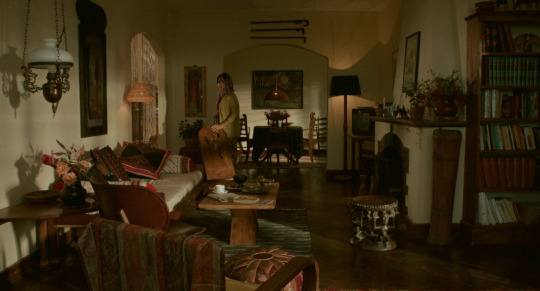
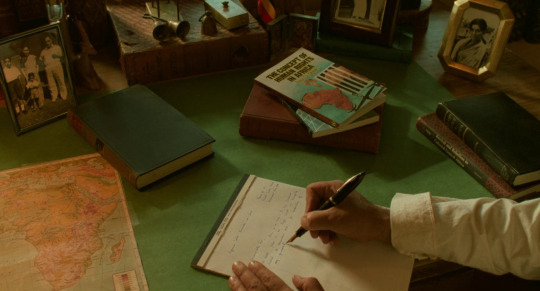
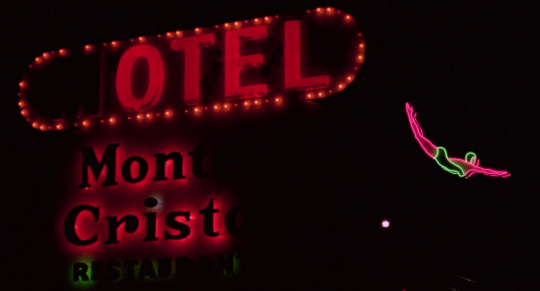
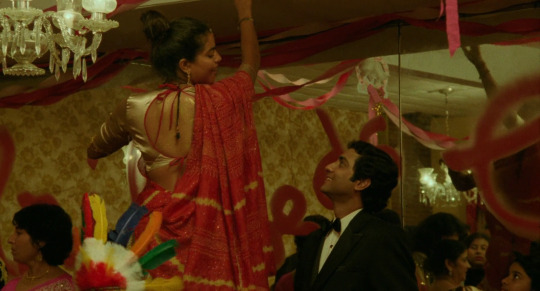
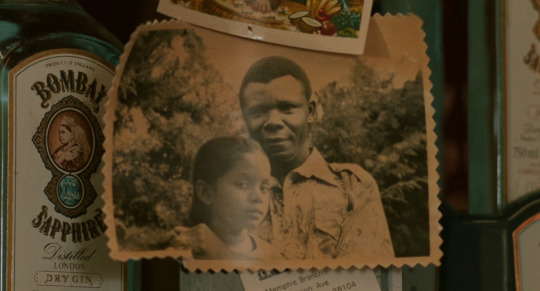
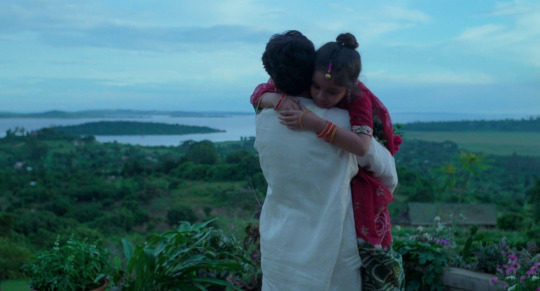
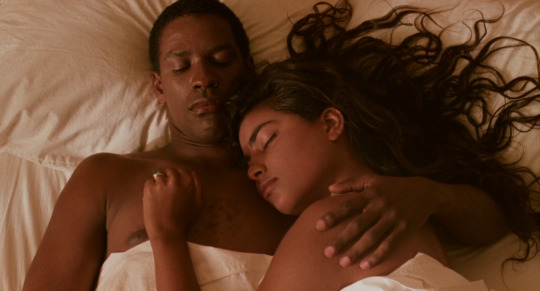
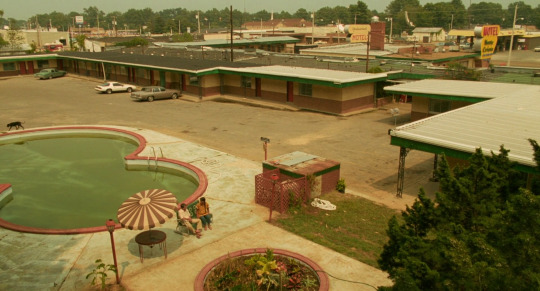
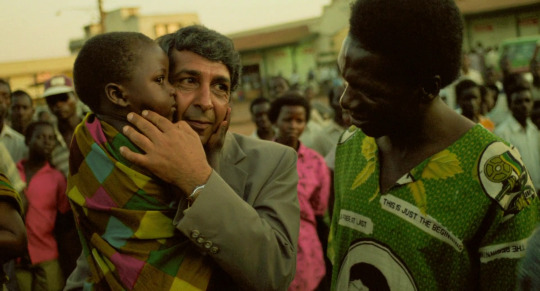
Mississippi Masala (1991) | dir. Mira Nair
#mississippi masala#mira nair#roshan seth#sharmila tagore#denzel washington#sarita choudhury#films#movies#cinematography#scenery#screencaps
308 notes
·
View notes
Text
LGBTQ Movie of the Day:
My Beautiful Launderette
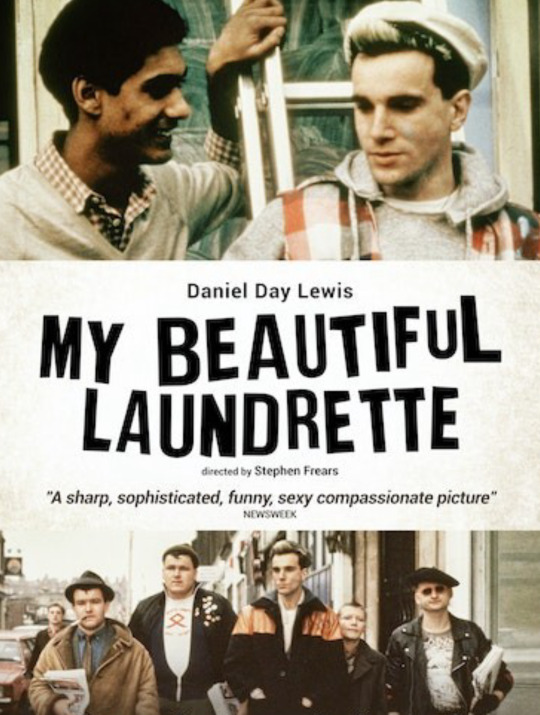
Description:
During a street fight, Omar bumps into his former lover Johnny. The two rekindle the romance between them and manage Omar's uncle's laundrette, but various social issues stand in their way of success.
Title: My Beautiful Launderette
Genre: Romance, Comedy
Age Rating: 15
Release Date: 1985
Relationships: MLM (Main plot)
Representation: Gay
Running Time: 1h 37m
Country of Origin: United Kingdom
Language: English
Box Office: $3 million
Warnings: Sex, nudity, violence, racism, homophobia, profanity
Starring: Saeed Jaffrey, Roshan Seth, Daniel Day-Lewis, Gordon Warnecke, Shirley Anne Field
Submitted by @dandandanny
#lgbt#lgbtq#lgbtqia#gay#mlm#gay representation#lgbtq representation#gay movies#gay romance#my beautiful laundrette#saeed jaffrey#roshan seth#daniel day lewis#gordon warnecke#shirley anne field#romance#comedy#1980s#united kingdom
18 notes
·
View notes
Text
Currently watching Mississippi Masala and I'm in heaven right now. What a beautiful movie

Still half the movie to go, I've already cried several times.
There's such a beauty in different cultures meeting. I want more of this in cinema.
Such a wide ocean of possibilities in all the genres.
#movies#movie time#mississipi masala#sarita choudhury#denzel washington#roshan seth#desi culture#african american culture#romance#love
8 notes
·
View notes
Text
In 1935, an archeological Professor Henry “Indiana” Jones Jr got stranded in India with his companion Short Round and a nightclub singer named Wilhelmina “Willie” Scott. While attempting to leave India they came across a village plagued by a zombie making, heart pulling out cult. (Indiana Jones and the Temple of Doom, Flm)
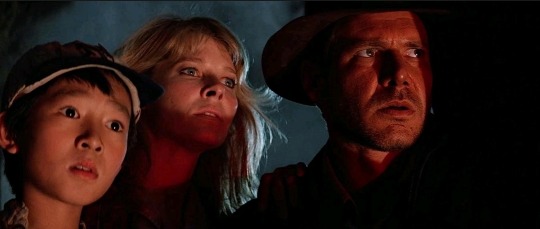
#nerds yearbook#1935#indiana jones#india#temple of doom#george lucas#gloria katz#willard huyck#steven spielberg#harrison ford#willie scott#kate capshaw#ke huy quan#short round#amrish puri#roshan seth#philip stone#roy chiao#david yip#ric young#chua kah joo#rex ngui#philip tan#dan aykroyd#michael yama
15 notes
·
View notes
Text
Mississippi Masala: The Ocean of Comings and Goings
By Bilal Qureshi MAY 25, 2022
often remark that my Punjabi parents immigrated to the American South woefully unaware that they’d brought us to a place with an incurable preexisting condition. Racism doesn’t belong exclusively to the South—the former Confederacy—but it was implemented at industrial scale across the region’s economic, political, and cultural life. Alongside this landscape’s sublime natural beauty—rivers, fields, and bayous—sits the history of America’s unsparing brutality against its Black citizens. On the other side of the world, in South Asia, as well as among its global diasporas, anti-Blackness is embedded in ideas of colorism and caste, in tribal imaginaries and policed lines of “suitable” marriages.
The possibility to live—and to love—across racial borders is the theme of Mira Nair’s extraordinarily prescient and sexy second feature film, Mississippi Masala (1991). Three decades later, it speaks to a new generation as groundbreaking filmic heritage—but also with an almost eerie, prophetic wisdom for how to live beyond the confinements of identity and color. Even by today’s standards, the film is a radical triumph of cinematic representation, centering as it does Black and Brown filmmaking, acting, and storytelling. It is also a genre-defying outlier that would likely be as difficult to get financed and produced today as it was then. Part comedy, part drama, rooted in memoir and colonial history, the film that Nair imagined was a low-budget independent one with global settings and ambitions. The notion of representation—perhaps more accurately described as a correction of earlier misrepresentations—wasn’t its point or its currency. Race was its very subject. Nair has said she wanted to confront the “hierarchy of color” in America, India, and East Africa with the film—the kinds of limitations that she had experienced firsthand by living, studying (first sociology, then film), and making documentaries in both India and the United States. In a shift that began with her first feature film, Salaam Bombay! (1988), Nair set out to transform those real-world issues into fictionalized worlds, translating her sociological observations into works suffused with beauty, music, and, in the case of Mississippi Masala, humid sensuality.

Nair first engaged with the questions at the heart of the film when she came to the United States from India to study at Harvard in the mid-1970s. As a new arrival to the country’s color line, she has recalled, both its Black and white communities were accessible to her, and yet she belonged to neither. The experience of being outside that specific American binary would be a formative and fertile site of dislocation for the young filmmaker. Nair trained in documentary under the mentorship of D. A. Pennebaker, among others, and her first films were immersive explorations of questions that haunted her own life. The pangs of exile and homesickness for lost motherlands became the foundation of So Far from India (1983), and the boundaries of “respectability” for women in Indian society the subject of India Cabaret (1985). Salaam Bombay!—made in collaboration with her fellow Indian-born classmate, the photographer and screenwriter Sooni Taraporevala—carried her Direct Cinema training to extraordinary new heights. Working, from a script by Taraporevala, with nonactors on location in the streets of Mumbai, Nair found a filmic language that could merge the rigor of realism with the haunting emotion of fiction. It would become the creative model for Nair and Taraporevala’s translation of the real-life phenomenon of Indian-owned motels in the American South into a spicy cinematic blend of migration, rebellion, and romance.
During research trips across Mississippi, Louisiana, and South Carolina that Nair made in 1989, she discovered that many of the Indian motel owners in the South had come to the United States from Uganda following their expulsion by President Idi Amin in 1972. Ten years after the East African country gained its independence from British rule, Amin had blamed his country’s economic woes on its privileged and financially successful South Asian community. In the racial politics of empire, the British had privileged the Indian workers they had imported to East Africa, creating racial hierarchies Amin now wanted to destroy by way of politicizing race anew. In a line that is repeated in the screenplay, the mission was “Africa for Africans,” and for tens of thousands of Asian families, it was an uprooting and dislocation from which some would never recover.
In Mississippi Masala, the classically trained British Indian actor Roshan Seth plays Jay, the immigrant father who is the focal point of the “past” of the film’s dual narrative, which is beautifully balanced in the way that it interweaves the perspectives of two generations. In the film’s harrowing overture, Jay—along with his wife, Kinnu (Sharmila Tagore), and their daughter, Mina (Sarita Choudhury)—is being forced to flee Kampala, and he laments that it will always be the only home he has known. With stoic reserve, holding back tears, Seth conveys the gravity of the loss, as the camera captures the lush beauty of the family’s garden and the faces of those they must leave behind. Throughout the film, as Kinnu, Tagore—an acclaimed Indian film star and frequent Satyajit Ray collaborator—is a composed counterpoint to Seth’s troubled Jay in her character’s strength and resilience. When the film picks up with the family two decades later, Kinnu is shown managing the family’s liquor store, while an aging Jay writes to petition Uganda’s new government to reclaim his lost property. Nair’s camera pans up from his writing desk to reveal through his window the parking lot of a roadside Mississippi motel. This is where Jay works and exists in a permanent state of nostalgia, until he is jolted awake by Mina’s demands for a home and a life of her own.
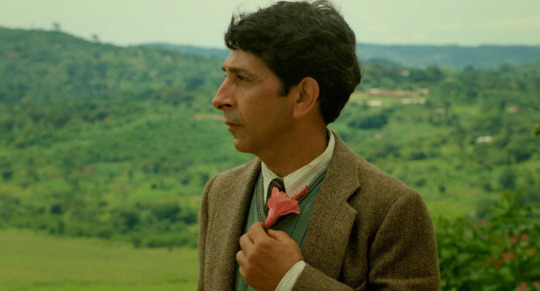
Even as Jay dreams in sepia-toned memories, the film itself never descends into saccharine longing or scored sentimentality. The rigor of the research and on-location filmmaking in both Mississippi and Kampala is reflected in an unvarnished and immersive visual style. While Nair herself clearly understood the fabric of the lives of the Gujarati Hindu families she was portraying, she has discussed how Denzel Washington became a critical collaborator in ensuring that southern Black life was rendered with equal attention to detail, cultural specificity, and dignity. The result is a film whose homes and communities are etched with a palpable sense of reality.
All of Mississippi Masala’s disparate threads are bound together by a distinctly sultry southern love story, which naturally remains the best-remembered feature of the film. The meet-cute of Mina and Washington’s character, Demetrius, is quite literally a traffic collision, a not-so-subtle suggestion that, without a bit of movie magic and melodrama, these two southerners might never have been maneuvered into the exchanged numbers and glances, and palpable wanting, that still burn the screen today. The film is fueled by the gorgeousness and megawatt charisma of both its stars, the young Washington paired with Choudhury in a prodigious debut as a woman at the edge of adulthood—her mane of wavy hair, their sweaty night of dancing to Keith Sweat, aimless late-night phone calls, dark skin in white bedsheets, secret meetings, consummated desires.
In the background of the R&B song of young, electric love are the film’s quieter, deeper notes on migration. A string leitmotif by the classical Indian violinist L. Subramaniam recurs whenever the vistas of Lake Victoria across the family’s lost garden in Kampala appear on-screen in brief flashbacks. Nair’s mastery with music has only deepened with time, resulting in films that integrate archival and original music with a free-form alertness that is distinctly her own. Both for the African American people living amid strip malls in the dilapidated neighborhoods of a region to which their ancestors were brought by bondage, and for the Indian families forced by Amin to flee their homes, exile is expressed in stereo. As Jay pines for the country he lost, Demetrius’s brother dreams of visiting Africa and saluting Nelson Mandela—disparate but recognizable longings and family histories shared over a southern barbecue, American bridges.

There wouldn’t be racial borders, however, if they weren’t policed, and the policing authorities here come from across the racial spectrum. When Mina and Demetrius’s relationship is discovered by nosy Indian uncles, those boundaries flare up. From the Black ex-girlfriend who asks why the good Black men can’t date Black women, to the Indian uncles who barge into Demetrius and Mina’s hotel room, to the gossiping aunties who during phone calls mock Mina’s rebellious scandal, there is a veritable chorus of condemnation. It is portrayed with great comedic timing and wit, including from Nair herself, who delivers some of the sharpest lines of disapproval in the role of “Gossip 1.” But the implications of those judgments remain unfunny by design. The film’s remarkable achievement is the way it never buckles under the thematic weight of these uncomfortable truths. Nair always delivers her cerebral punches with a lightness and warmth that are precisely calibrated. These are the markers of a filmmaker in full control of the tone, color, production design, and, always, music to accompany the emotional demands of her material, and that facility has only gotten sharper in such masterpieces as Monsoon Wedding (2001).
Mississippi Masala showed at festivals in late 1991 and was released commercially in American cinemas in February 1992, within weeks of Wayne’s World and Basic Instinct. Working outside Hollywood’s conventions, Nair joined an extraordinary flowering in independent filmmaking that continues to be celebrated. The year 1991 had been a landmark one for Black cinema already, with the release of Julie Dash’s Daughters of the Dust, Mario Van Peebles’s New Jack City, and John Singleton’s Boyz n the Hood. Spike Lee’s opus Malcolm X, with Washington in the title role, would be released in the U.S. in late 1992. Nair’s film was shown at the same 1992 Sundance Film Festival at which a landmark panel about LGBTQ representation heralded a movement, named New Queer Cinema by moderator B. Ruby Rich, devoted to reclaiming stories of love and suffering from Hollywood’s gaze. These were parallel currents that echoed larger shifts and openings happening in global culture. The collapse of the Soviet Union, the end of apartheid in South Africa, India’s economic liberalization, and the rise of a youthful southern Democrat in the U.S. following a decade of Republican rule were stirrings of a new order. The possibilities were being felt all over the world as Nair’s film of southern futures arrived. Described by the New York Times at the time as “sweetly pungent” and by the Washington Post as a “savory multiracial stew,” Mississippi Masala opened in American cinemas to rave, if exoticizing, reviews, less than a decade after Richard Attenborough’s Gandhi and Steven Spielberg’s portrayal of Indian characters eating monkey brains during a ritual dinner in Indiana Jones and the Temple of Doom. Realistic international cinema featuring everyday South Asian life—as opposed to the Indian musical tradition or Hollywood’s tropes about foreignness—had almost no precedents or peers at the time. The depiction of South Asian characters as ordinary working-class Americans navigating questions of family, money, and love remains a radical achievement. Mississippi Masala also manages to decenter whiteness altogether. In a film about racial hierarchies, white characters appear only in the background, as the motel guests, patrons, and shopkeepers of Greenwood society. By design, this is first and foremost a film about Mina and Demetrius, and the families and communities that formed them. Despite all the extraordinary accomplishments in the streaming age by the current generation of filmmakers of color, Mississippi Masala’s layered portrayal of race and love still feels unparalleled. To hear its characters speak candidly about the real lines that divide them, and reflect on the costs of crossing those lines, is to recognize the rigorous thinking—and living—that informed the screenplay. Even more disappointing than the lack of contemporary equals to the film, perhaps, are the offscreen parallels in South Asian communities like my own, where colorism and anti-Blackness are stubborn traditions yet to be fully dismantled. Stories of interracial love are still rarely told on-screen, and these relationships—the masala mixes—are still not visible enough to become as normalized as they deserve to be.
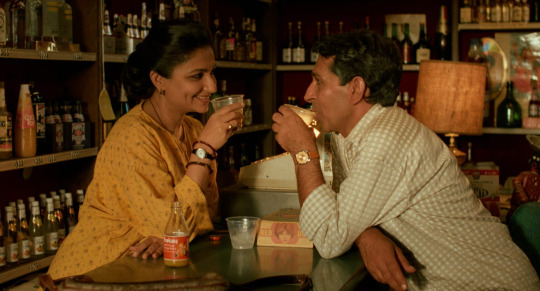
One of Nair’s first films, So Far from India, was filmed between New York City and Gujarat. It opens with a folk musician in the streets of Ahmedabad, a sequence that serves as a prelude to the film, about an Indian immigrant and the wife he has left behind. Nair, as narrator, translates his singing about the ocean of comings and goings. With Mississippi Masala, Nair positioned herself as both a great chronicler and a great navigator of that vast ocean of comings and goings. America is one of Nair’s homes, and she has made several films about the immigrant experience there, including her adaptations of Jhumpa Lahiri’s The Namesake (2006) and Mohsin Hamid’s The Reluctant Fundamentalist (2012). Each has sought to look at the country through the eyes of those usually on the margins in order to dramatize and problematize the idea of the American dream. It is these poetic and cinematic ruminations on identities in flux that feel like her most enduring, almost personal, gifts to hyphenated viewers like myself.
When I was younger, I thought Mississippi Masala embodied Mina’s rebellion, the promise of independence, and the freedom to choose whom and how to love. But now, twenty years after I first saw the film, at university, Jay’s longing for home and his incurable displacement feel equally, achingly resonant. With the limitations of America laid bare by the gift of adulthood, migration is no longer only a hurtling forward toward the rush of freedoms; it is now also the unknowable costs borne by my parents, the homes and selves they left behind.
The film’s closing credits, braiding Jay’s return to Kampala with glimpses of Mina and Demetrius kissing in the warmth of the southern sun, capture Nair’s exquisite feat of balancing—and blending—in Mississippi Masala. For a film traversing so many geographies and registers, there is finally a seamless harmony between father and daughter, between tradition and future, between here and there. As seen anew in restored colors, Mississippi Masala endures not for its spicy and pungent aromas of cultural specificity or representational breakthrough but for this profound commitment to multiplicity. It is a timeless song for and to those who live—and love—in multitudes.

#Criterion Collection#Mississippi Masala#Mira Nair#Charles S. Dutton#Denzel Washington#Roshan Seth#Sarita Choudhury#Sharmila Tagore#Joe Seneca#Bilal Qureshi
12 notes
·
View notes
Text
Not Without My Daughter (1991) Review
Based on the true story of an American woman who became trapped in Iran when making a visit with her husband and daughter, something he had planned all along? ⭐️⭐️ Continue reading Not Without My Daughter (1991) Review

View On WordPress
#1991#Alfred Molina#Betty Mahmoody#Brian Gilbert#David W. Rintels#Drama#Ed Grady#Georges Corraface#Gili Ben-Ozilio#Marc Gowan#Mony Rey#Not Without My Daughter#Review#Roshan Seth#Sally Field#Sarah Badel#Sheila Rosenthal#Thriller#William Hoffer
4 notes
·
View notes
Text
𝒪𝓀𝒶𝓎, ℐ'𝓂 𝓃𝑜𝓉 𝑔𝑜𝓃𝓃𝒶 𝒷𝑒 𝓁𝒾𝓀𝑒𝒹 𝒻𝑜𝓇 𝓈𝒶𝓎𝒾𝓃𝑔 𝓉𝒽𝒾𝓈 𝒶𝒷𝑜𝓊𝓉 𝓉𝒽𝑒 𝓃𝑒𝓍𝓉 𝓂𝑜𝓋𝒾𝑒 𝓅𝑜𝓈𝓉 𝒷𝓊𝓉 ℐ 𝒽𝑜𝓃𝑒𝓈𝓉𝓁𝓎 𝒹𝑜𝓃'𝓉 𝒸𝒶𝓇𝑒. 𝐈𝐧𝐝𝐢𝐚𝐧𝐚 𝐉𝐨𝐧𝐞𝐬 𝐚𝐧𝐝 𝐭𝐡𝐞 𝐓𝐞𝐦𝐩𝐥𝐞 𝐨𝐟 𝐃𝐨𝐨𝐦 (1984) 𝒾𝓈 𝓂𝓎 𝒻𝒶𝓋𝑜𝓇𝒾𝓉𝑒 𝐈𝐧𝐝𝐢𝐚𝐧𝐚 𝐉𝐨𝐧𝐞𝐬 𝓂𝑜𝓋𝒾𝑒 𝑜𝓊𝓉 𝑜𝒻 𝒶𝓁𝓁 𝑜𝒻 𝓉𝒽𝑒𝓂 𝓌𝒽𝒾𝒸𝒽 𝒾𝓈 𝓉𝒽𝑒 𝓇𝑒𝒶𝓈𝑜𝓃 𝓌𝒽𝓎 𝒾𝓉'𝓈 𝑜𝓃 𝓂𝓎 𝓂𝑜𝓋𝒾𝑒 𝓁𝒾𝓈𝓉. 𝗗𝗿. 𝗝𝗼𝗻𝗲𝘀 𝓇𝑒𝓉𝓊𝓇𝓃𝓈 𝓉𝑜 𝒷𝒶𝓉𝓉𝓁𝑒 𝒶𝑔𝒶𝒾𝓃𝓈𝓉 𝓉𝒽𝑒 𝑔𝓇𝑒𝑒𝒹𝓎 𝓉𝒽𝒾𝑒𝓋𝑒𝓈 𝑜𝒻 𝒶𝓇𝒸𝒽𝑒𝑜𝓁𝑜𝑔𝒾𝒸𝒶𝓁 𝓉𝓇𝑒𝒶𝓈𝓊𝓇𝑒𝓈 𝑜𝓃𝒸𝑒 𝒶𝑔𝒶𝒾𝓃, 𝒷𝓊𝓉 𝓉𝒽𝒾𝓈 𝓉𝒾𝓂𝑒 𝒾𝓉'𝓈 𝒻𝑜𝓇 𝒶 𝓇𝑒𝒶𝓁𝓁𝓎 𝑔𝑜𝑜𝒹 𝓇𝑒𝒶𝓈𝑜𝓃. 𝒯𝒶𝓀𝒾𝓃𝑔 𝓅𝓁𝒶𝒸𝑒 𝒾𝓃 𝐒𝐡𝐫𝐢 𝐋𝐚𝐧𝐤𝐚 𝐈𝐧𝐝𝐢𝐚 𝒶𝓃𝒹 𝒷𝑒𝒻𝑜𝓇𝑒, 𝓈𝓉𝒶𝓇𝓉𝒾𝓃𝑔 𝒾𝓃 𝐒𝐡𝐚𝐧𝐠𝐡𝐢 𝐂𝐡𝐢𝐧𝐚 𝓌𝒽𝑒𝓇𝑒 𝗜𝗻𝗱𝗶𝗮𝗻𝗮 𝓂𝓊𝓈𝓉 𝒸𝑜𝓃𝒻𝓇𝑜𝓃𝓉 𝒶 𝓉𝑒𝓇𝓇𝒾𝒷𝓁𝑒 𝑔𝒶𝓃𝑔 𝓁𝑒𝒶𝒹𝑒𝓇 𝒷𝑜𝓈𝓈 𝓀𝓃𝑜𝓌𝓃 𝒶𝓈 𝗟𝗮𝗼 𝗖𝗵𝗲. 𝗗𝗿. 𝗝𝗼𝗻𝗲𝘀 𝒶𝓁𝑜𝓃𝑔 𝓌𝒾𝓉𝒽 𝒽𝒾𝓈 𝒸𝓊𝓉𝑒 𝓈𝒾𝒹𝑒𝓀𝒾𝒸𝓀 𝗦𝗵𝗼𝗿𝘁 𝗥𝗼𝘂𝗻𝗱 𝒶𝓀𝒶 𝐊𝐞 𝐇𝐮𝐲 𝐐𝐮𝐚𝐧 𝑔𝑒𝓉 𝓌𝒽𝒶𝓉 𝓉𝒽𝑒𝓎'𝓋𝑒 𝒷𝑒𝑒𝓃 𝓈𝑒𝒶𝓇𝒸𝒽𝒾𝓃𝑔 𝒻𝑜𝓇 𝒷𝓊𝓉 𝓊𝓃𝒻𝑜𝓇𝓉𝓊𝓃𝒶𝓉𝑒𝓁𝓎 𝒽𝒶𝓋𝑒 𝓉𝑜 𝑔𝑜 𝒶𝓁𝑜𝓃𝑔 𝓌𝒾𝓉𝒽 𝒶𝓃 𝑒𝓍𝓉𝓇𝒶 𝓅𝑒𝓇𝓈𝑜𝓃, 𝗪𝗶𝗹𝗹𝗶𝗲 𝗦𝗰𝗼𝘁𝘁 𝓌𝒽𝑜 𝓌𝒶𝓈 𝓉𝒽𝑒 𝒸𝓁𝓊𝒷 𝓈𝒾𝓃𝑔𝑒𝓇 𝒻𝓇𝑜𝓂 𝓉𝒽𝑒 𝐒𝐡𝐚𝐧𝐠𝐡𝐢 𝓃𝒾𝑔𝒽𝓉 𝒸𝓁𝓊𝒷. ℐ 𝓁𝑜𝓋𝑒𝒹 𝐊𝐚𝐭𝐞 𝐂𝐚𝐩𝐬𝐡𝐚𝐰 𝒶𝓈 𝗪𝗶𝗹𝗹𝗶𝗲 𝑒𝓋𝑒𝓃 𝓉𝒽𝑜𝓊𝑔𝒽 𝓂𝒶𝓃𝓎 𝒽𝒶𝓉𝑒𝒹 𝒽𝑒𝓇 𝓅𝑒𝓇𝒻𝑜𝓇𝓂𝒶𝓃𝒸𝑒, 𝒷𝓊𝓉 ℐ 𝓁𝑜𝓋𝑒𝒹 𝒽𝑜𝓌 𝓈𝒽𝑒 𝒶𝒹𝒹𝑒𝒹 𝒽𝒾𝓁𝒶𝓇𝒾𝓉𝓎 𝓉𝑜 𝓉𝒽𝑒 𝓂𝑜𝓋𝒾𝑒. 𝒜𝓃𝑜𝓉𝒽𝑒𝓇 𝓇𝑒𝒶𝓈𝑜𝓃 𝓌𝒽𝓎 ℐ 𝓁𝑜𝓋𝑒 𝐓𝐞𝐦𝐩𝐥𝐞 𝐨𝐟 𝐃𝐨𝐨𝐦 𝒾𝓈 𝒻𝑜𝓇 𝓉𝒽𝑒 𝒷𝑒𝒶𝓊𝓉𝒾𝒻𝓊𝓁 𝓈𝒸𝑒𝓃𝑒𝓇𝓎 𝓉𝒽𝓇𝑜𝓊𝑔𝒽𝓉𝑜𝓊𝓉 𝓉𝒽𝑒 𝒻𝒾𝓁𝓂 𝒶𝓃𝒹 𝓉𝒽𝑒 𝓈𝓉𝑜𝓇𝓎𝓁𝒾𝓃𝑒 𝒷𝑒𝒾𝓃𝑔 𝒶 𝓁𝒾𝓉𝓉𝓁𝑒 𝓈𝒸𝒶𝓇𝓎/𝒶𝓌𝑒𝓈𝑜𝓂𝑒 𝒶𝓉 𝓉𝒽𝑒 𝓈𝒶𝓂𝑒 𝓉𝒾𝓂𝑒. 𝒲𝒽𝑒𝓃 ℐ 𝒻𝒾𝓇𝓈𝓉 𝓌𝒶𝓉𝒸𝒽𝑒𝒹 𝐈𝐧𝐝𝐢𝐚𝐧𝐚 𝐉𝐨𝐧𝐞𝐬 𝐚𝐧𝐝 𝐭𝐡𝐞 𝐓𝐞𝐦𝐩𝐥𝐞 𝐨𝐟 𝐃𝐨𝐨𝐦 𝒶𝓈 𝒶 𝒾𝓉𝓉𝓎 𝒷𝒾𝓉𝓉𝓎 𝓉𝒽𝒾𝓃𝑔, ℐ 𝓌𝒶𝓈 𝒶𝓂𝒶𝓏𝑒𝒹. 𝒯𝒽𝑒 𝒶𝒸𝓉𝒾𝑜𝓃, 𝓈𝓅𝑒𝒸𝒾𝒶𝓁 𝑒𝒻𝒻𝑒𝒸𝓉𝓈, 𝑔𝒾𝒶𝓃𝓉 𝒷𝓊𝑔𝓈 (𝓌𝒽𝒾𝒸𝒽 𝓂𝓎 𝓈𝒾𝓈𝓉𝑒𝓇 𝒽𝒶𝓉𝑒𝒹) 𝓅𝓁𝓊𝓈 𝓉𝒽𝑒 𝒷𝑒𝒶𝓊𝓉𝒾𝒻𝓊𝓁 𝓅𝑒𝑜𝓅𝓁𝑒. 𝒯𝒽𝒾𝓈 𝓌𝒶𝓈 𝓉𝒽𝑒 𝒻𝒾𝓇𝓈𝓉 𝓉𝒾𝓂𝑒 ℐ 𝓌𝒶𝓈 𝒾𝓃𝓉𝓇𝑜𝒹𝓊𝒸𝑒𝒹 𝓉𝑜 𝓉𝒽𝑒 ℐ𝓃𝒹𝒾𝒶𝓃 𝒸𝓊𝓁𝓉𝓊𝓇𝑒, ℐ 𝓀𝓃𝑜𝓌 𝒾𝓉'𝓈 𝓃𝑜𝓉 𝒶 𝓇𝑒𝒶𝓁 𝓇𝑒𝓅𝓇𝑒𝓈𝑒𝓃𝓉𝒶𝓉𝒾𝑜𝓃 𝑜𝒻 ℐ𝓃𝒹𝒾𝒶 𝒶𝓃𝒹 𝓉𝒽𝑒 𝓅𝑒𝑜𝓅𝓁𝑒 𝒷𝓊𝓉 𝒾𝓃 𝒶 𝒸𝒽𝒾𝓁𝒹𝓈 𝑒𝓎𝑒, ℐ 𝓇𝑒𝒶𝓁𝓁𝓎 𝓉𝒽𝑜𝓊𝑔𝒽𝓉 𝑜𝒻 𝒾𝓉 𝒶𝓈 𝑔𝓇𝑒𝒶𝓉 𝑒𝓈𝓅𝑒𝒸𝒾𝒶𝓁𝓁𝓎 𝓉𝒽𝑒 𝓈𝓉𝑜𝓇𝓎 𝑜𝒻 𝓉𝒽𝑒 𝓅𝓇𝑜𝓉𝑒𝒸𝓉𝒾𝓋𝑒 𝓅𝑜𝓌𝑒𝓇𝓈 𝑜𝒻 𝓉𝒽𝑒 𝙎𝙖𝙣𝙠𝙖𝙧𝙖 𝙎𝙩𝙤𝙣𝙚𝙨. ℐ𝒻 𝓎𝑜𝓊 𝑒𝓋𝑒𝓇 𝒷𝑒𝓉𝓇𝒶𝓎𝑒𝒹 𝓉𝒽𝑒 𝒢𝑜𝒹 𝐒𝐡𝐢𝐯𝐚 𝓁𝒾𝓀𝑒 𝓉𝒽𝑒 𝒸𝒽𝒶𝓇𝒶𝒸𝓉𝑒𝓇 𝗠𝗼𝗹𝗮 𝗥𝗮𝗺 (𝐀𝐦𝐫𝐢��𝐡 𝐏𝐮𝐫𝐢) 𝒹𝒾𝒹 𝓌𝒾𝓉𝒽𝒾𝓃 𝓉𝒽𝑒 𝒻𝒾𝓁𝓂, 𝓎𝑜𝓊'𝓁𝓁 𝒷𝑒 𝓅𝓊𝓃𝒾𝓈𝒽𝑒𝒹 𝒷𝓎 𝒾𝓉'𝓈 𝒻𝒾𝑒𝓇𝓎 𝒹𝑒𝓋𝒶𝓈𝓉𝒶𝓉𝒾𝑜𝓃 𝑜𝓇 𝓂𝒶𝓎𝒷𝑒 𝓌𝑜𝓇𝓈𝑒. 𝒮𝓉𝒾𝓁𝓁 𝒶 𝒻𝓊𝓃 𝒻𝒾𝓁𝓂 𝓉𝒽𝒶𝓉 ℐ'𝓁𝓁 𝓃𝑒𝓋𝑒𝓇 𝑔𝑒𝓉 𝓉𝒾𝓇𝑒𝒹 𝑜𝒻 𝓌𝒶𝓉𝒸𝒽𝒾𝓃𝑔.
#Indiana Jones and the Temple of Doom (1984)#Adventure/Action#Harrison Ford#Kate Capshaw#Ke Huy Quan#Amrish Puri ✝︎#Dan Aykroyd#Roshan Seth#Raj Singh#David Yip#D. R. Nanayakkara ✝︎#Ric Young#Nizwar Karanj#Chua Kah Joo#Roy Chiao ✝︎#Pat Roach ✝︎#Philip Stone ✝︎#Iranganie Serasinghe#Philip Tan#Arthur F. Repola#Michael Yama ✝︎#Dharmadasa Kuruppu ✝︎#Akio Mitamura
3 notes
·
View notes
Text
Indiana Jones and the Temple of Doom (1984)

They don’t make movies like Indiana Jones and the Temple of Doom anymore - for multiple reasons. Certain aspects of this film will take modern movie-goers aback. You can focus on the dubious cultural depictions, violence and gross-out humor or you can divert your attention to what works: the never-ending tension, action scenes & set pieces, cinematography and the ever-charismatic lead.
In this prequel to Raiders of the Lost Ark, Indiana Jones (Harrison Ford) narrowly escapes from crime boss Lao Che (Roy Chiao) with his eleven-year-old sidekick Short Round (Ke Huy Quan) and nightclub singer Willie Scott (Kate Capshaw). Unfortunately, they soon find themselves stranded in northern India, where many children have gone missing and a sacred stone - one of the five fabled Shankara stones - has been stolen. Their quest to unravel the mystery brings our heroes to an ancient Thuggee cult who practice dark magic and ritualistic human sacrifices.
In a way, this picture is much lighter than Raiders. We’re not dealing with Nazis. Indy and his little buddy are going up against India’s equivalent of devil-worshippers but the villains are firmly planted in the realm of fantasy. There are many jokes as the boys playfully bicker and roll their eyes at Willie, who has no business being on this adventure but wound up alongside them. Over and over, she’s screaming at the bugs, skeletons, traps and dangers they encounter. The duo would be much better off without the dumb blonde… but abandoning her would be irresponsible. She’s nothing like Karen Allen's Marion and the film makes that clear. If Willie's going to complain about being away from the city, let's give her a real reason to - which means lots and lots of ewwww moments. This is where people might raise an eyebrow. There’s a famous banquet scene where the most stomach-churning foods are served. You may interpret it as a) an implication that all Indians are barbarians that eat eyeballs and snakes (although the good villagers we meet early-on definitely do not) b) an elaborate gag that may or may not resonate with you (humor is subjective, after all) or c) hints that something at this palace is amiss…
Despite the initial tone, this is an intense movie. There are torture and grisly human sacrifices, children are kidnapped/enslaved, people are explicitly killed - often in gruesome manners. The tone is far too intense to be rated PG but it was. The PG-13 rating was only introduced after the MPAA got similar complaints from Gremlins just one month later.
This film isn't as mature as its "successor" and it doesn't feel as polished either, though the filmmaking is still excellent. Once Indy and the gang realize the danger they've stumbled upon, the tension never lets up. Every escape is merely a brief reprieve. A new peril rolls around the next corner, ready to flatten them. It's fast-paced and exciting. Along the way, you also get excellent cinematography and camerawork. The shots which contrast Short Round to his big buddy are terrific. Through quick cuts and parallel actions, the camera says more than words ever could. It's a roller-coaster ride - sometimes literally. You'll be left breathless and maybe even overwhelmed. Is the movie for kids? maybe, maybe not. It's somewhere in between.
Often violent & gruesome and lacking some of the sophistication of Raiders of the Lost Ark, Indiana Jones and the Temple of Doom is a disappointment... but only for this franchise. As a film on its own, or as a "first entry" in a series, it would make you go "wow!" Dated elements aside, it's exciting, memorable and fun. (On Blu-ray, May 22, 2020)

#indiana jones#Indiana Jones and the Temple of Doom#movies#films#movie reviews#film reviews#Steven Spielberg#Willard Huyck#Gloria Katz#Harrison Ford#Kate Capshaw#Ke Huy Quan#Amrish Puri#Roshan Seth#Philip Stone#Roy Chiao#1984 movies#1984 films
5 notes
·
View notes
Text
Now watching:

Mississippi Masala (1991, dir. Mira Nair)
#mississippi masala#mira nair#denzel washington#sarita choudhury#roshan seth#sharmita tagore#charles s dutton
0 notes
Photo
One of my faves ��



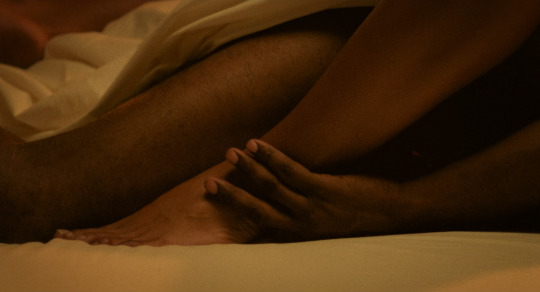
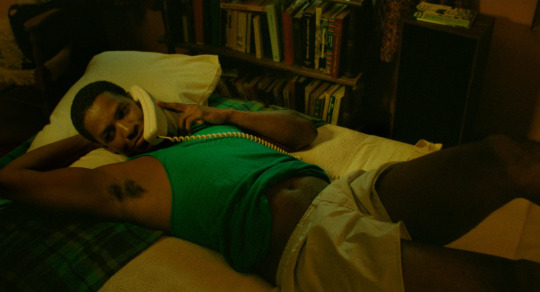
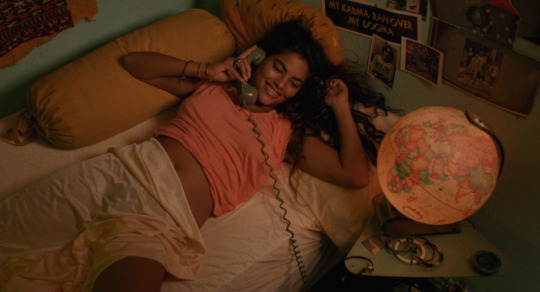
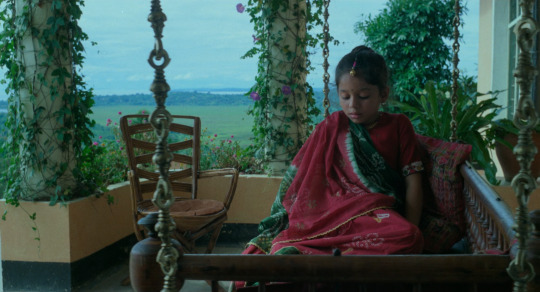
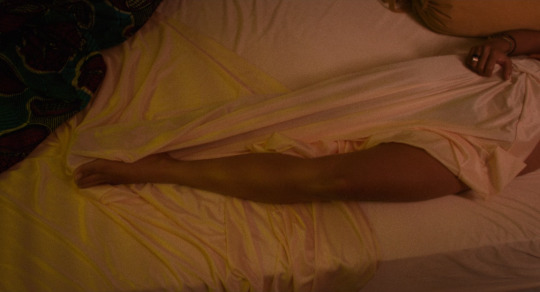
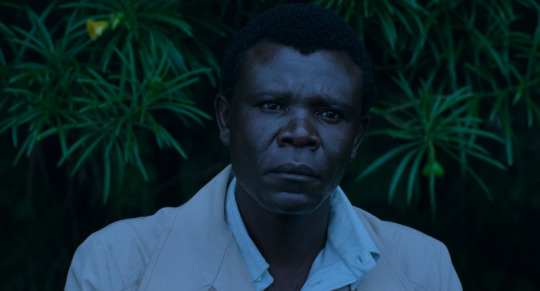
Mississippi Masala (1991) Dir. Mira Nair Cinematography: Edward Lachman
367 notes
·
View notes
Text

Currently Watching - 30 Days of The Gays™ Edition
MY BEAUTIFUL LAUNDRETTE Stephen Frears UK, 1985
#30 Days of The Gays™#Daniel Day-Lewis#Gordon Warnecke#queer films#Roshan Seth#Saeed Jaffrey#Stephen Frears#watching
1 note
·
View note
Text
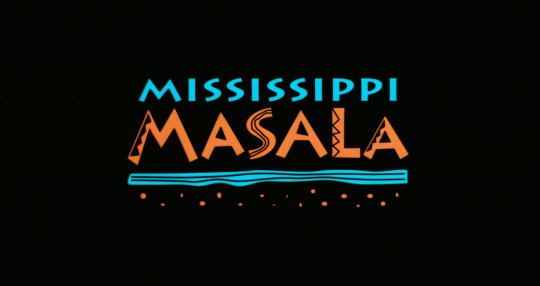

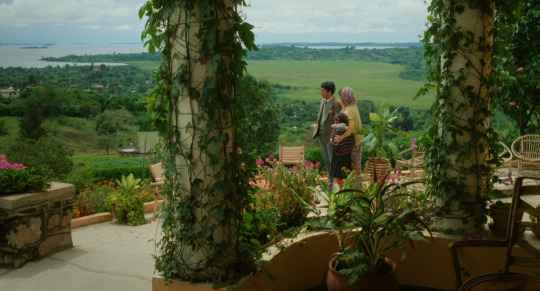
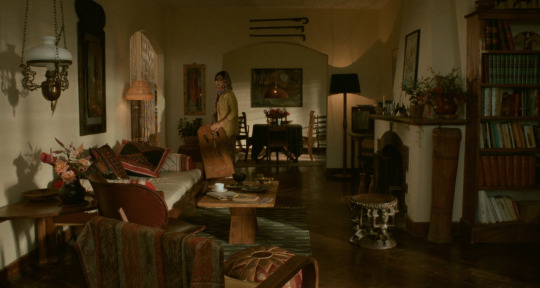
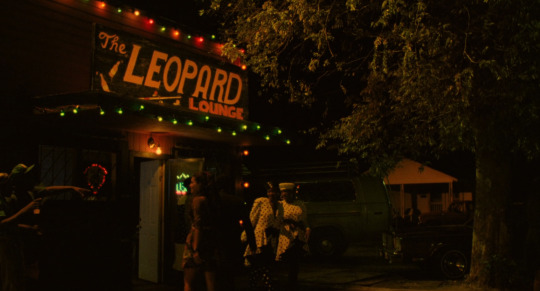
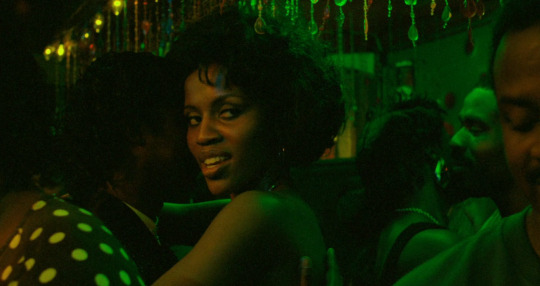
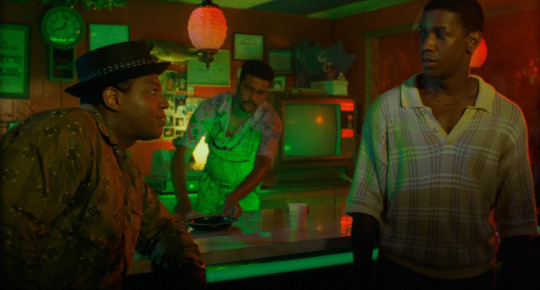

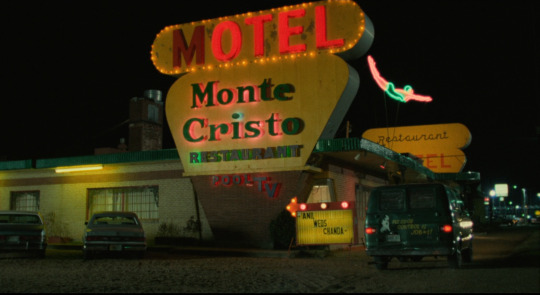
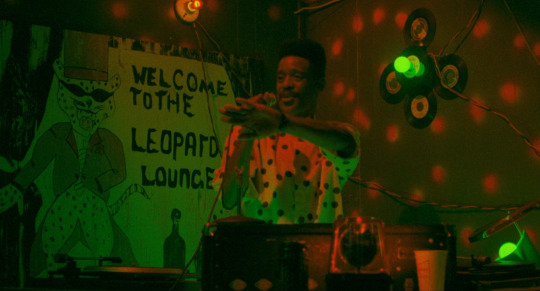
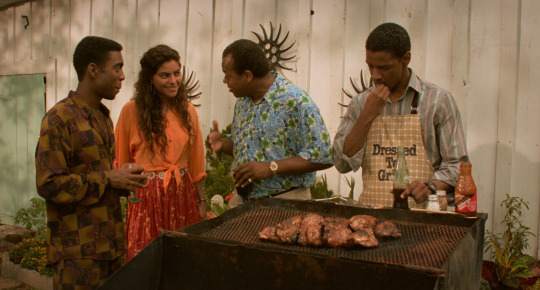
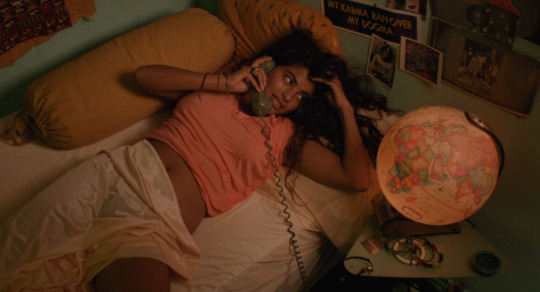
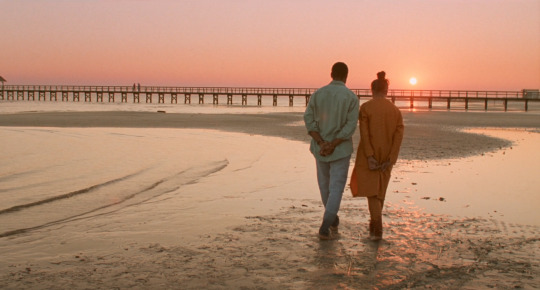

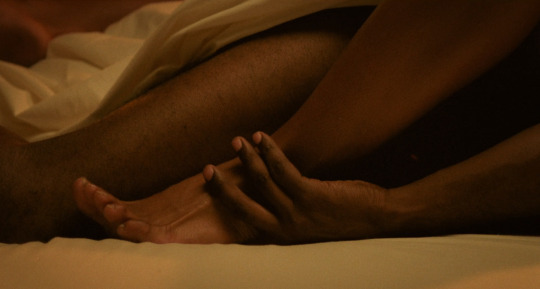
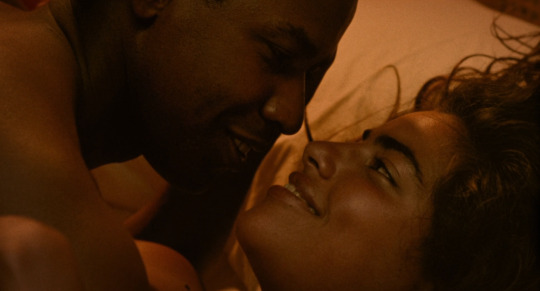

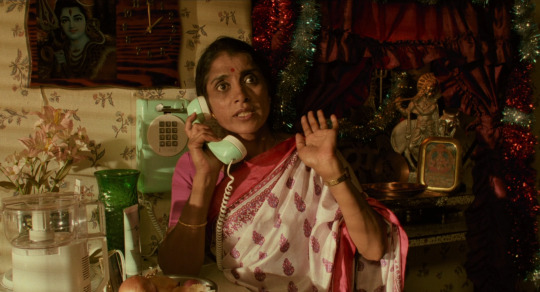
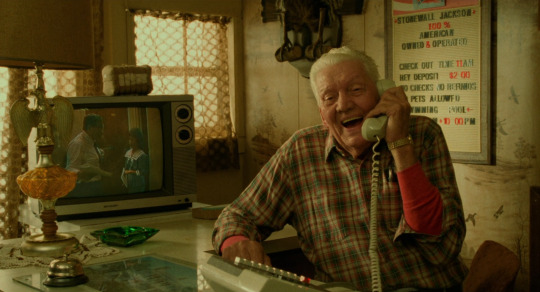
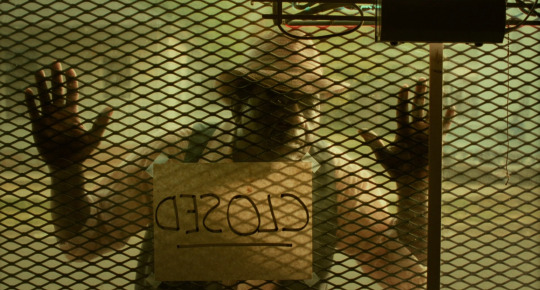
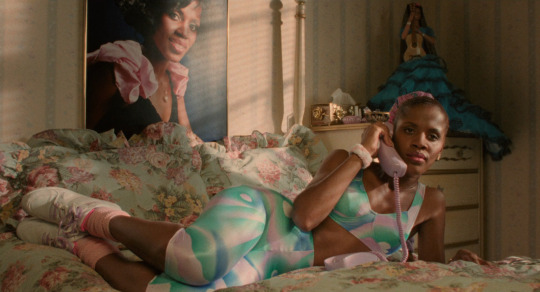
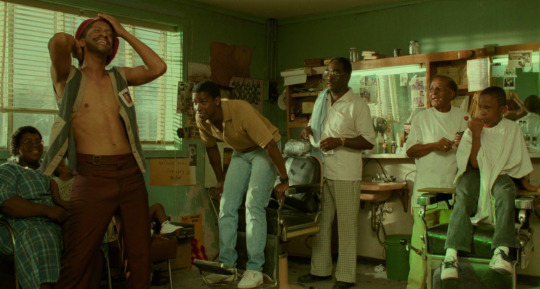

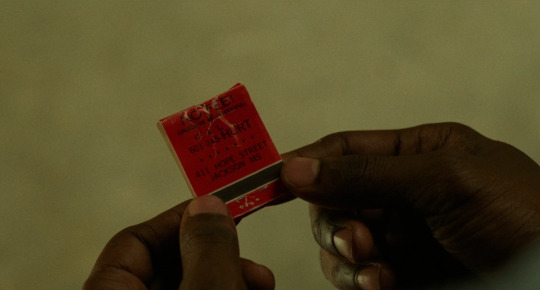
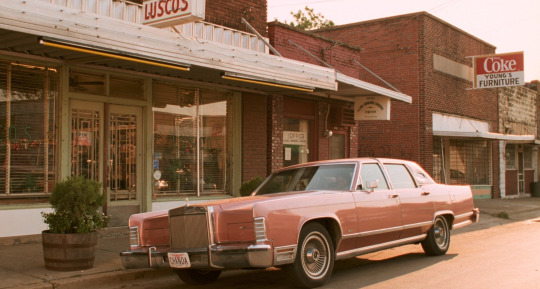
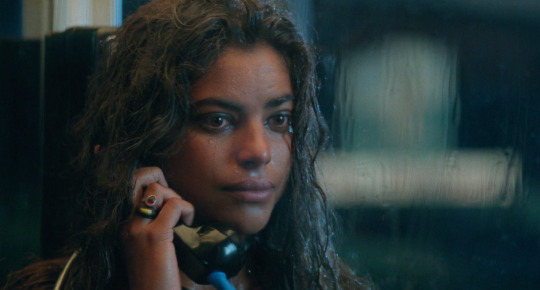
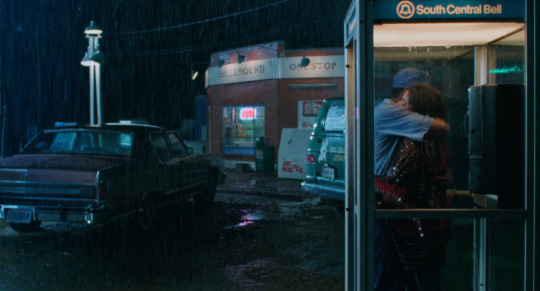
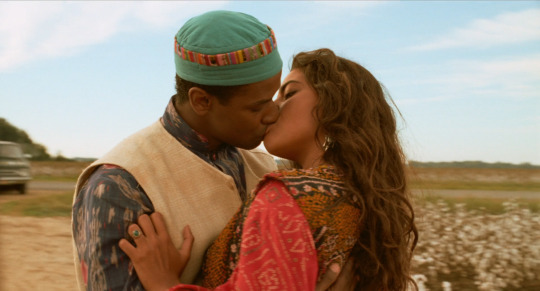

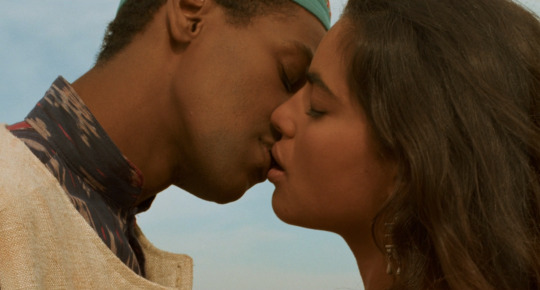
Mississippi Masala (1991)
Two of the Hottest People You’ve Ever Seen fall in love—despite the protestations of their families and the cultural differences that divide them—against the backdrop of the dreary Deep South in Mira Nair’s sexy, undeniable romantic dramedy.
Director: Mira Nair
Cinematographer: Edward Lachman
Production Designer: Mitch Epstein
Costume Designers: Ellen Lutter and Susan Lyall
Starring: Sarita Choudhury, Denzel Washington, Roshan Seth, Sharmila Tagore, Charles S. Dutton, Joe Seneca, Ranjit Chowdhry, Mohan Gokhale, Natalie Oliver-Atherton, Sahira Nair, and Konga Mbadu.
#mississippi masala#1991#mira nair#sarita choudhury#denzel washington#sharmila tagore#natalie oliver atherton#romantic comedy#costume design#feminist film#female directed films#90s movies#independent film#mississippi#cult classic#criterion collection#indian american#black history month#steamy#female directors#woman director#directed by women#1990s#90s fashion#production design#cult film#90s cinema#feminist cinema#romantic movies#90s aesthetic
185 notes
·
View notes
Text

elizabeth mcgovern with roshan seth, zeljko ivanek, david hare, & alfre woodward on the set of the new york shakespeare festival production of “a map of the world) (1985) | 📸: martha swope
3 notes
·
View notes
Text
Omar, a young Brit from a Pakistani family, and his boyfriend Johnny, a former skinhead, attempt to open the nicest laundromat in London while tackling issues of family, race, class, sex, crime, and Thatcher-era austerity.
Starring Saeed Jaffrey, Roshan Seth, Daniel Day-Lewis, Gordon Warnecke, and Shirley Anne Field. Written by Hanif Kureishi and directed by Stephen Frears
Episode 132 - My Beautiful Launderette
https://sites.libsyn.com/398906/episode-132-my-beautiful-launderette-1985




2 notes
·
View notes
Text
Février MMXXV
Films
Embrasse-moi, idiot (Kiss Me, Stupid) (1964) de Billy Wilder avec Dean Martin, Kim Novak, Ray Walston, Felicia Farr, Cliff Osmond, Barbara Pepper, Doro Merande, Howard Mc Near et Henry Gibson
Mauvaise Graine (1934) de Billy Wilder et Alexander Esway avec Danielle Darrieux, Pierre Mingand, Raymond Galle, Jean Wall, Paul Escoffier, Michel Duran et Marcel Maupi
Top Secret (The Tamarind Seed) (1974) de Blake Edwards avec Julie Andrews, Omar Sharif, Anthony Quayle, Bryan Marshall, Oskar Homolka, George Mikell, Dan O'Herlihy et Sylvia Syms
Psych: The Movie (2017) de Steve Franks avec James Roday, Dulé Hill, Timothy Omundson, Maggie Lawson, Kirsten Nelson, Corbin Bernsen, Zachary Levi, Kurt Fuller, Jimmi Simpson, Robert LaSardo et Jazmyn Simon
Le Nouveau Stagiaire (The Intern) (2015) de Nancy Meyers avec Robert De Niro, Anne Hathaway, Rene Russo, Anders Holm, JoJo Kushner, Andrew Rannells, Adam DeVine, Zack Pearlman, Jason Orley et Christina Scherer
Flic ou Voyou (1979) de Georges Lautner, Georges Géret, Marie Laforêt, Jean-François Balmer, Claude Brosset, Julie Jézéquel, Michel Beaune, Tony Kendall, Catherine Lachens, Juliette Mills et Venantino Venantini
Jane (Becoming Jane) (2007) de Julian Jarrold avec Anne Hathaway, James McAvoy, Laurence Fox, James Cromwell, Maggie Smith, Julie Walters, Ian Richardson, Anna Maxwell Martin, Joe Anderson et Jessica Ashworth
Porc royal (A Private Function) (1984) de Malcolm Mowbray avec Michael Palin, Maggie Smith, Denholm Elliott, Richard Griffiths, John Normington, Tony Haygarth, Bill Paterson, Liz Smith et Jim Carter
La Chiasse Américaine (2014) de Lucas Feltain avec Armand Jussman, Charles Jouanic, Clémence Féat, Nicolas Guirlet, Pierre Feltain, Madjid Abba, Erwan Loas, Gaelig Loas et Guillemette Chambon
SOS Fantômes : L'Héritage (Ghostbusters: Afterlife) (2021) de Jason Reitman avec Mckenna Grace, Finn Wolfhard, Carrie Coon, Paul Rudd, Logan Kim, Celeste O'Connor, Bill Murray, Dan Aykroyd, Ernie Hudson, Harold Ramis et Sigourney Weaver
Douze Hommes en colère (12 Angry Men) (1957) de Sidney Lumet avec Henry Fonda, Martin Balsam, John Fiedler, Lee J. Cobb, E. G. Marshall, Jack Klugman, Ed Binns, Jack Warden, Joseph Sweeney, Ed Begley, George Voskovec et Robert Webber
Le Triporteur (1957) de Jacques Pinoteau avec Darry Cowl, Béatrice Altariba, Pierre Mondy, Roger Carel, Maurice Gardett, Jacques Thébault, Simone Jarnac, Christian Nohel, Jean Ozenne et Pierre Doris
Terreur sur le Britannic (Juggernaut) (1974) de Richard Lester avec Richard Harris, Omar Sharif, David Hemmings, Anthony Hopkins, Shirley Knight, Ian Holm, Roy Kinnear, Jack Watson, Roshan Seth, Freddie Jones et Clifton James
Ghost World (2001) de Terry Zwigoff avec Scarlett Johansson, Thora Birch, Steve Buscemi, Brad Renfro, Illeana Douglas, Bob Balaban, Anna Berger et Stacey Travis
Appelez Nord 777 (Call Northside 777) (1948) de Henry Hathaway avec James Stewart, Richard Conte, Lee J. Cobb, Helen Walker, Betty Garde, Kaza Orzazewski, Joanne de Bergh et Moroni Olsen
Elle boit pas, elle fume pas, elle drague pas, mais… elle cause ! (1970) de Michel Audiard avec Annie Girardot, Bernard Blier, Sim, Mireille Darc, Catherine Samie, Jean-Pierre Darras, Micheline Luccioni, Jean Le Poulain et Anicée Alvina
Pile ou Face (1980) de Robert Enrico avec Philippe Noiret, Michel Serrault, Dorothée, Guilhaine Dubos, Bernard Le Coq, Fred Personne, André Falcon, Pierre Arditi et Jean Desailly
Le Parfum vert (2022) de Nicolas Pariser avec Sandrine Kiberlain, Vincent Lacoste, Rüdiger Vogler, Léonie Simaga, Arieh Worthalter, Jenna Thiam, Alexandre Steiger, Pascal Rénéric, Thomas Chabrol et Xavier de Guillebon
Rocky 3 : L'Œil du tigre (Rocky III) (1982) de Sylvester Stallone avec Sylvester Stallone, Talia Shire, Mister T., Burt Young, Burgess Meredith, Carl Weathers, Tony Burton, Hulk Hogan, Ian Fried, Al Silvani et Wally Taylor
Séries
Astrid et Raphaëlle Saison 4
L'Œil du dragon - Les 1001 nuits - 30 000 pieds - Immortel - Sacrifice du fou - La Passagère du temps - L'Ankou - Coupable
Inspecteur Barnaby Saison 24
Le livre des morts - Toutes griffes dehors - Un climat de mort
Kaamelott Livre I, II
Décibels nocturnes - La Fête de l’hiver - Gladiator - La Blessure mortelle - Le Dragon des tunnels - Retour de campagne - L’Escorte - Tel un chevalier - La Pâte d’amande - La Fureur du dragon - Vox populi - Unagi - L’Éclaireur - Lacrimosa - La Quête des deux renards - Agnus Dei - Le Tourment - La Retraite - La Vraie Nature du Graal - Spangenhelm - Les Alchimistes - Le Dialogue de Paix - Le Portrait - Silbury Hill - Le Reclassement - Le Rassemblement du Corbeau - Les Volontaires II - Le Terroriste - La Chambre - Le Message Codé - La Délégation Maure - L’Enlèvement de Guenièvre - Les Classes de Bohort - Le Monde d’Arthur - Les Tuteurs - Les Jumelles du Pêcheur - Sept Cent Quarante-Quatre - L'Absolution - Les Misanthropes - La Cassette - Plus Près de Toi - La Révolte - Sous les Verrous - Séli et les Rongeurs - Un Roi à la Taverne II - L'Ancien Temps - Le Passage Secret - Les Mauvaises Graines - La Garde Royale - L'Ivresse - Mater Dixit - Spiritueux - La Ronde - Merlin l'Archaïque - Les Exploités - L’Escorte II - Le Larcin - La Rencontre - Les Pigeons - O'Brother - La Fête du Printemps - La Voix Céleste - L'Invincible - Amen - Le Cadeau - Le Complot - La Vigilance d’Arthur - Les Chiens de Guerre - Always - Arthur in Love - Excalibur et le Destin - L'Absent - The Game - La Quinte Juste - La Fumée Blanche - Unagi II - La Joute Ancillaire - Le Donneur - Le Jeu du Caillou - L'Alliance - Le Secret d'Arthur
K2000 Saison 1, 2
Amnésie - Cœurs de pierre - La liberté ou la mort - Opération Topaze - Une si jolie petite ville - L'or des Aztèques - L'oiseau blanc - Les pirates de la route - Trafic - Marchandage - Goliath : première partie - Goliath : deuxième partie - Souvenirs d'enfance - Les marchands de mort - Vivre en paix - Retour à Cadiz - Cambriolage - Vol de voiture - Le bon programme - Le cercle de feu
Friends Saison 8
Celui qui découvrait les joies du bain - Celui qui découvrait le placard secret - Celui qui visionnait la vidéo de l'accouchement - Celui qui avouait tout à Rachel - Celui qui voyait dans les feuilles de thé - Celui qui était trop positif - Celui qui se faisait interviewer - Celui qui animait un jeu stupide - Celui qui passait un entretien d'embauche - Celui qui assistait à la première - Celui qui avait un bébé : première partie - Celui qui avait un bébé : deuxième partie
L'Île aux trente cercueils
Premiers Mystères - Retour aux Sources - La Prédiction - François - Jumeaux - Chantage
Peacemaker Season 1
Monkey Dory - Murn After Reading - Stop Dragon My Heart Around - It's Cow or Never
Affaires sensibles
"Cannibal Holocaust", le film le plus controversé de l'histoire du cinéma ? - 1910, Paris inondé - "Underground", Palme d'Or de la polémique - L’assassinat de Jaurès - Bernard Natan, un génie du cinéma effacé de l’image - Clairvius Narcisse, l’homme-zombie - La communauté de Monte Verità en Suisse
James May : Oh Cook! Saison 1
Comme au pub - Un air d'Asie - Pasta Delisioza
Mademoiselle Holmes Saison 1
On ouvre ses chakras ! - RechercheK-Lista - Sortie de route - Baker Street - -20 degrés - Le dernier problème
Bref. Saison 1
Bref. J'ai dragué cette fille - Bref. Je remets tout à demain - Bref. Je me suis préparé pour un rendez-vous - Bref. J'ai passé un entretien d'embauche - Bref. J'ai fait un repas de famille - Bref. J'ai traîné sur internet - Bref. Je joue de la guitare - Bref. J'ai vu un psy - Bref. J'ai recroisé cette fille - Bref. J'ai un plan cul régulier - Bref. Je suis comme tout le monde - Bref. J'ai eu un job - Bref. J'étais coincé dans un ascenseur - Bref. Mes parents divorcent - Bref. Je suis allé faire les courses avec mon frère - Bref. Je me suis bourré la gueule - Bref. Je suis allé à ce mariage - Bref. J'ai couché avec une flic - Bref. Mon pote s'est fait larguer - Bref. J'ai eu 47 minutes de retard - Bref. Je suis allé au supermarché - Bref. On a enterré Croquette - Bref. Mon coloc a fait l'amour - Bref. J'ai fait un rêve - Bref. J'ai fait un dépistage - Bref. J'ai un pote à conditions générales - Bref. J'ai recouché avec mon ex - Bref. J'aime bien cette photo - Bref. Je suis hypocondriaque - Bref. J'ai pas réussi à dormir - Bref. Je suis allé au cinéma avec cette fille - Bref. Je sais pas dire non - Bref. J'ai couché avec Émilie - Bref. J'ai fait un concert - Bref. J'ai monté un meuble - Bref. J'ai dîné avec cette fille - Bref. J'y pense et je souris - Bref. J'ai voulu partir en vacances - Bref. J'ai déménagé - Bref. J'étais à côté de cette fille - Bref. J'ai pris le métro - Bref. J'ai un nouvel appart. - Bref. Je suis allé aux urgences - Bref. Je me suis fait agresser - Bref. J'ai eu une panne - Bref. J'ai eu 30 ans - Bref. Je suis vieille - Bref. Ma copine travaille dans un sex-shop - Bref. Baptiste est Super Flippant - Bref. J'ai fêté le nouvel an - Bref. Mon frère a quelqu'un - Bref. Je suis en couple - Bref. Y a des gens qui m'énervent - Bref. J'ai aucune mémoire - Bref. Je m'appelle Éric Dampierre - Bref. J'ai grandi dans les années 90 - Bref. On était des gamins - Bref. C'était sa chanson préférée - Bref. Mon père veut être jeune - Bref. Je suis un plan cul régulier - Bref. J'étais dans la merde - Bref. J'étais toujours dans la merde - Bref. J'ai fait un choix - Bref. J'ai fait un dessin - Bref. J'ai un nouveau pote - Bref. Mon frère est gay - Bref. J'ai perdu mes cheveux - Bref. J'ai passé un coup de fil - Bref. C'est la merde - Bref. J'ai fait une connerie - Bref. J'ai fait une soirée déguisée : première partie - Bref. J'ai fait une soirée déguisée : deuxième partie - Bref. J'ai fait une soirée déguisée : troisième partie - Bref. J'ai fait une soirée déguisée : quatrième partie - Bref. J'ai tout cassé - Bref. Je suis en mode survie - Bref. J'ai envoyé un texto - Bref. Je me suis réveillé à côté d'une fille - Bref. Je suis né - Bref. J'ai fait une dépression - Bref. Lui, c'est Kheiron - Bref. Dernier épisode - Bref. J'ai croisé Michel Denisot - Bref. J'ai une voix off - Bref. J'ai pas eu de croquettes - Bref. Nous sommes 2 millions
Les cinq dernières minutes Saison 1
L'inspecteur sur la piste - Meurtre par intérim
Spectacles
Voulzy Souchon : Le Concert (2016)
Queen : Hungarian Rhapsody: Live in Budapest (1986)
Face au Public : Les Charlots : 4ème Festival International du Rire de Rochefort (1984)
Le Technicien (2012) d'Éric Assous avec Roland Giraud, Maaïke Jansen, Jean Barney, Martine Mongermont, Zoé Bruneau, Arthur Fenwick, Jean Franco et Jean-Yves Roan
Livres
Dos à la mer de Steve Moreau
Astérix, tome 18 : Les Lauriers de César de René Goscinny et Albert Uderzo
Dans les coulisses du Vendée Globe avec Romain Attanasio de Bertrand Parent et Romain Attanasio
Détective Conan : Tome 25 de Gôshô Aoyama
Détective Conan : Tome 26 de Gôshô Aoyama
1 note
·
View note